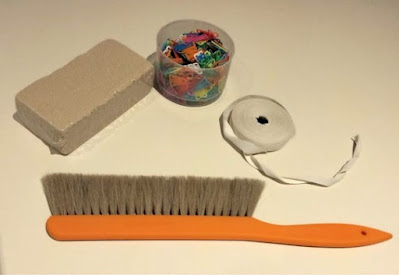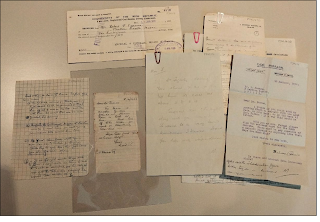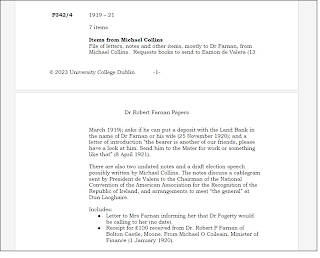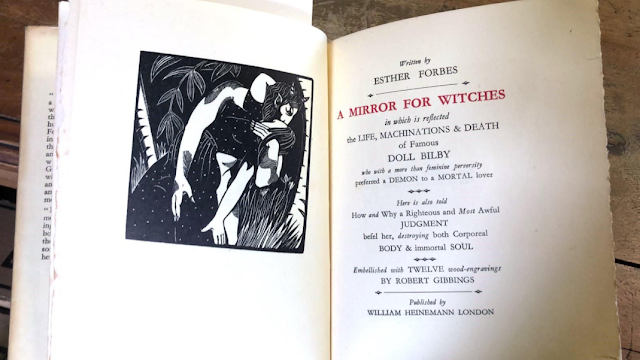An early project
I began working as a library assistant in UCC Library in April, and like anybody would, I immediately
felt I had a huge amount to learn.
I was recently part of an ongoing Library initiative to improve our messaging and resources around
health and safety in our buildings. I was tasked with creating engaging fire safety resources. This was
a perfect chance for me to get to grips with my new role, and to get to know my new place of work.
It felt like an interesting and relevant project, and I was keen to get involved.
There is also a universal relevance to this project: all of us working in libraries must take health and
safety into account. We must also consider the capacity of users to safely evacuate in emergency
situations.
For this project, I had several things to consider.
- for these resources to be engaging, I needed to make novel and accessible something which is probably not the most exciting or engaging.
- These resources were to be used for self-training. Potentially a daunting prospect, but there was a useful freedom in devising training that would be engaging and approachable, to boil down the necessary information into a user-friendly format.
With these considerations in mind, I decided to make video tutorials. These would have value added
through an interactive quiz, via H5P software (short for HTML5 Package, a tool for easily creating
interactive content). My next consideration, then, was how to structure the video to ensure it was
informative, engaging, and accessible.
I began storyboarding using existing resources on fire safety procedures, took several walks around
the building to tour its fire exits, and examined floorplans, attempting to view the relevant
information through the eyes of the least informed library user, i.e., the user with the greatest
learning need.
A screenshot from one of the fire safety videos highlighting the emergency exits on one library floor.
Building the video: keeping faith in trial and error
With a script written and approved by the University Fire Marshall, I had a view of the core learning
objective ‘what do you do in the event of a fire, or a fire drill, when in the library?’ I could then build
from this, (though I was working on the basis that trial and error might guide the project still.)
As I had chosen a video format, the logical progression for me was to show a video of each fire exit
being entered and followed to its route out of the building. I eagerly set to filming, capturing a
panorama of the space surrounding each exit, and capturing the routes to safety. I gathered my
video files and set them into a structure: the floorplan zooms to each exit in sequence, then cuts to a
video of this exit being utilised. This sounds logical and useful; however, after reviewing a draft video
in this format, I found it was not very engaging. I found that as the video moves through the footage
of exits being followed, the pace lags and I imagined the audience’s attention dwindling.
I am a firm believer in trial and error in creative endeavours, and I now had my first problem to set
about solving. I returned to the library website to study the existing floorplans, observing how they
are set up with interactive hotspots showing relevant areas (Library Floorplans: Q+3). I decided to
use a static image of the exits in their locations, and of anything relevant such as an emergency
phone. I set to constructing another test video, this time, the pace was more engaging, and it felt
easier to parse the location of each exit. The video was now three minutes long, which, crucially, felt
like a digestible length, without needing to rush essential information.
A look at the video project in construction
The voiceover brought its own considerations, I was certain it wasn’t as simple as reading a script.
Once I began recording, it quickly became apparent that there was a certain tone of voice needed,
certain inflections and stresses in relevant areas, and an awareness that I needed to sound
approachable, engaged and calm.
I found the process of recording the voiceover interesting; aspects of the script needed to be
tweaked, as things needed re-wording to be clearer when spoken aloud, and syllables became
important. Some language was simplified, and instructions were adjusted to be clear and linear.
Conclusion: reflecting on the finished product
With a successful first video, the next challenge was replication, as I decided to make a video for
each floor of the library, allowing time and space to give a comprehensive overview and allow for
discussion of the intricacies of each floor.
In all, I enjoyed making these resources.
As a new library staff member, it was a useful means of getting to know the physical space, and to
begin to gain in-depth knowledge into the various procedures in place. As I have a background in
video editing, I enjoyed working on something functional, to use my existing skills to build a learning
tool. At the time of writing, these videos are set to be integrated into the library website, and they
will become part of the orientation material for students in September.
I’m really looking forward to seeing my work on the library website. And hopefully seeing them used by others The format of these videos is clear and linear, it could be applied to any library building or a similar approach could be adopted, using an instructional video with a built-in quiz to test users' knowledge of fire safety procedures.














.png)









.png)










